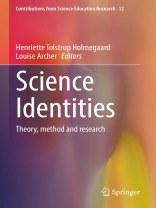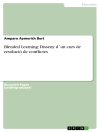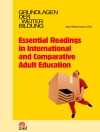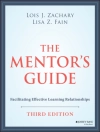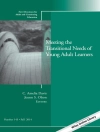This edited volume brings together a state-of-the-art collection of leading and emergent research on the burgeoning topic of science identities. It sets out how science identity can be productively used as a lens in understanding patterns and inequalities in science participation across different educational and international contexts. Its chapters reveal how intersections of social identities and inequalities shape participation and engagement in science. Particular attention is given to explicating issues of theory and method, identifying the potential and limitations of approaches and lacunae in existing knowledge. The book showcases research from a range of disciplinary areas, employing diverse methodological and conceptual approaches to investigate science identities across different fields and settings. The collection offers a rich and comprehensive understanding of how science identity can be used conceptually, methodologically and analytically to understand how learners andteachers relate to, and make sense of, science. It’s a valuable resource for students, researchers and academics in the field of science education and anyone who is interested in identity and education.
Daftar Isi
Part 1. Introduction.- Chapter 1. Understanding and contextualizing the field of science identity research (Heidi B. Carlone).- Part 2. Student Science Identities outside and inside school.- Chapter 2. “My Love For It Just Wasn’t Enough to Get Me Through”: A Longitudinal Case Study of Factors Supporting and Denying Black British Working-Class Young Women’s Science Identities and Trajectories (Louise Archer).- Chapter 3. “It was always about relationships and it was awesome”: Girls performing gender and identity in an out-of-school-time science conversation club (Allison Gonsalves).- Chapter 4. Young women’s identity work in relation to physics at the transition from school to further educational pathways (Thorid Rabe).- Chapter 5. Student identity, aspiration and the exchange-value of physics (Billy Wong).- Part 3. Student science identities in higher education.- Chapter 6. Science talent and unlimited devotion: An investigation of the dynamics of university students’ scienceidentities through the lens of gendered conceptualisations of talent (Henriette Tolstrup Holmegaard).- Chapter 7. Doing geoscience: negotiations of science identity among university students when learning in the field (Lene Møller Madsen).- Chapter 8. Identity perspectives in research on university physics education – what is the problem represented to be? (Anders Johansson).- Part 4. Science teachers’ identities and practices.- Chapter 9. Exploring the Connections Between Student-Teacher-Administration Science Identities in Urban Settings (Rachel Askew).- Chapter 10. Science Teacher Identity Work in Colonized and Racialized Spaces (Gale Seiler).- Chapter 11. Understanding Science Teacher Identity Development within the Figured Worlds of Schools (Gail Richmond).- Chapter 12. Identities in Action: Opportunities and Risks of Identity Work in Community & Citizen Science (Colin G. Dixon).- Part 5. Multi-layered methodological approaches to science identities.- Chapter 13. Using Qualitative Metasynthesis to Understand the Factors that Contribute to Science Identity Development Across Contexts in Secondary and Post-Secondary Students from Underrepresented Groups (Sylvia M. James Butterfield).- Chapter 14. Representing STEM identities as pragmatic configurations (Ruurd Taconis).- Chapter 15. How Activity Frames Shape Situated Identity Negotiation: Theoretical and Practical Insights from an Informal Engineering Education Program (Smirla Ramos-Montañez).- Part 6. Conclusion.- Chapter 16. Working towards Justice: Critical Next Steps in Identity Studies in Science Education (Angela Calabrese Barton).
Tentang Penulis
Henriette Tolstrup Holmegaard is an associate professor at the department of science education, University of Copenhagen. She holds a Ph.D. in Higher science education. Her research centers on students’ transitions, choices and identity-negotiations in relation to science and engineering across the educational system. Currently Henriette work dedicated on researching the inequalities that transcend science practices, cultures and spaces within different science disciplines from an equity perspective. Together with Louise Archer, Henriette was the co-founder of the ESERA special interest group in Science Identities. She has been engaged in NARST committee work and served as an associated editor of the journal JRST. Henriette is a key figure in forming a community for science identity researchers within science education. This book is a result of bringing different researchers within this field together.
Louise Archer is the Karl Mannheim Professor of Sociology of Education at University College London and is co-chair of the Centre for Sociology of Education and Equity. She holds a Ph D in Social Psychology. Her current research focuses on STEM educational identities and inequalities, particularly in relation to gender, social class and ‘race’/ethnicity, across formal and informal learning settings. Louise has authored 100+ publications, including books and journals articles. She has worked extensively with STEM teachers and informal learning educators to support equitable STEM practice, for which she has been awarded a number of prizes. Together with Henriette T Holmegaard, Louise has was the co-founder of the ESERA special interest group in Science Identities.
